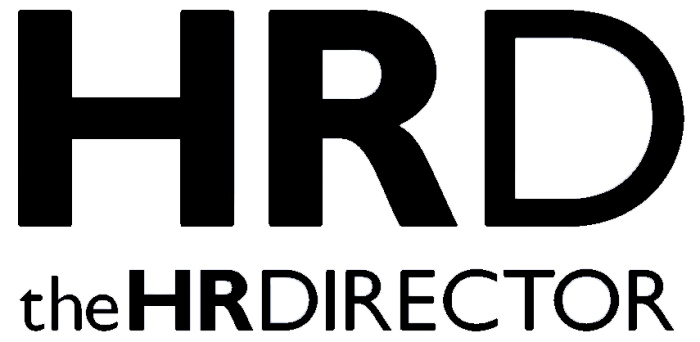The tension between profitability and sustainability is a common dilemma for business, particularly as new regulations and stakeholder expectations increase. How can leaders pivot their perception to view sustainability not as a ‘grudge purchase’ but rather as an opportunity?
While sustainability was once little more than an afterthought, it has become a central focus of almost every business strategy. The traditional emphasis on profitability is now more influenced by the need for social and environmental responsibility than ever before. As younger generations enter the economy – bringing elevated value expectations – and environmental, social, and governance (ESG) criteria ramp up globally, organizations must adapt to this shift in order to remain competitive and thrive.
In the past, the view was that resources were unlimited and that whatever lack arose would be ‘tomorrow’s problem’ for future generations. Sustainability was seen as a cost centre or, worse, as constraints on profitability. One could say that ‘tomorrow’ has come, and it’s become imperative to move beyond mere compliance and operational excellence and adopt a new mindset that recognizes our interdependence with the environment.
The good news is that research has shown that organizations that integrate sustainability into their core operations tend to outperform their peers over time. McKinsey’s Five Ways that ESG Creates Value reveals that businesses with a strong ESG agenda not only attract more investment but also benefit from greater long-term resilience:
- Across numerous industries, more than 70% of consumers surveyed would pay an additional 5% for a green product or service.
- By minimizing operating expenses, ESG can impact operating profits by up to 60%.
- A solid ESG value can give companies more strategic freedom and help lessen regulatory pressure, which places large shares of corporate profits at stake.
- Not only does a strong ESG help to attract and retain quality employees, but it’s also known to increase productivity by instilling a sense of purpose.
- Robust ESG propositions also improve investment returns by allocating capital to more promising and more sustainable opportunities, while abandoning stranded avenues that may not pay off because of longer-term environmental implications.
Stéphanie Engels, Partner at Signium Switzerland and Global co-Head Technology Practice, emphasizes this paradigm shift: “The real opportunity within sustainability arises when it is integrated into the DNA of an organization. It’s not just about compliance – it’s about seeing sustainability as a driver for new business models and opportunities.”
Martin Bernard, Signium Executive Search Partner and Global Co-Head Industrial Practice adds, “Renewable energy sectors have proven that profitability and environmental responsibility go hand in hand. Forward-thinking companies are already reaping the rewards by transitioning early – they are showing us that first, it can be done; second, it’s the right thing to do; and finally, there are still profits to be made.”
Sustainability has also become a critical factor for investors. With the rise of ESG-focused investment, companies are under growing pressure to showcase how their operations contribute to a more sustainable future and, in turn, higher market valuations.
How do we inspire leadership commitment to sustainability?
For sustainability to take root within an organization, leadership commitment is vital. Engels echoes this sentiment, saying, “If sustainability and corporate social responsibility are not top leadership priorities, they will never become a business priority.” This aligns with findings from the World Economic Forum, which asserts that sustainability must be embedded at the highest levels of leadership to drive meaningful change. According to WEF, 90% of executives believe sustainability is important, but only 60% of organizations have sustainability strategies in place.
Leadership’s role goes beyond setting sustainability goals and designing strategies that look good on paper. Bernard comments on this: “Leaders must inspire and mobilize their teams by creating an organizational culture where sustainability is not seen as an add-on but as integral to the company’s mission. Shareholders, particularly in family-owned businesses, should also consider the long-term impact of these transformations on their legacy.”
One company that has made significant progress in incorporating sustainability into its business strategies is Unilever. Under the leadership of former CEO Paul Polman, Unilever emerged as a global sustainability leader in 2010 when Polman launched the Unilever Sustainable Living Plan. This groundbreaking initiative was aimed at decoupling the company’s growth from its environmental footprint while amplifying its positive social impact.
Polman’s personal commitment to sustainability was evident in his decision to forgo the traditional focus on quarterly earnings reports. Instead, he prioritized long-term objectives that aligned Unilever’s financial success with its environmental and social responsibilities. This approach emphasized sustainable growth over short-term profit gains. This adjustment helped Unilever reduce its carbon emissions, water usage, and waste significantly while also improving the livelihoods of millions across its global supply chain.
Polman’s leadership showed that a purpose-driven business model could deliver both profit and social good, positioning Unilever as a role model for other companies striving to integrate sustainability into their core strategy.
Key strategies for sustainable transformation
To transform sustainability from an empty compliance exercise into a high-impact growth driver, companies must adopt a multifaceted approach. Engels emphasizes the importance of reimagining business models to ensure sustainability is at the core: “It’s about integrating sustainability into the very fabric of how a company operates.”
Bernard adds that long-term strategic vision is essential: “This kind of transformation isn’t a three-to-five-year plan; it spans decades.”
Here are some key strategies organizations can adopt to facilitate sustainable transformation:
1. Redefine business models
Sustainability should be at the heart of every business strategy. For example, companies that use a lot of resources are moving from old methods to circular economy models, focusing on cutting waste, reusing materials, and recycling products.
2. Leverage innovation and technology
Sustainable change depends a lot on new technology. Investing in things like renewable energy, carbon capture, and smart manufacturing can lower environmental damage while keeping profits up. Innovations like artificial intelligence (AI) and data analytics can help companies better track and reduce their carbon footprint.
3. Engage employees
Companies need to involve employees in sustainability efforts to create a shared purpose. This helps build a stronger workplace culture and retains people, especially younger generations, who want to work for environmentally responsible companies.
4. Embrace diversity, equity and inclusion (DEI)
A truly sustainable organization values different perspectives and builds an inclusive culture where everyone’s voice matters. Focusing on diversity boosts creativity, leads to better decisions, and builds stronger relationships with a broader group of people. By making DEI a part of hiring and developing leadership, companies become stronger, adapt easier to changes in their environment, and better reflect the communities they serve.
5. Collaborate with stakeholders
Sustainability is a shared responsibility, so companies need to work together with their suppliers and other partners. Good partnerships are essential for tackling tough issues like cutting carbon emissions and managing resources. Companies can better face sustainability challenges by teaming up with suppliers and customers.
6. Encourage continual learning and development
As sustainability evolves, companies need to invest in training programs to give their employees the right skills and knowledge. This could include teaching technical skills for new sustainability regulations and developing leadership programs that promote a sustainability mindset.
Bernard emphasizes the value of human resources and leadership: “Among other functions, HR holds a pivotal role in enabling the L&D process. It’s important to embed sustainability into all HR strategies by ensuring that employees are trained in sustainability and able to apply systemic thinking at the core of their day-to-day business.”
How can purpose-driven leadership build people?
Zig Ziglar, motivational speaker and author, once said, “You don’t build a business. You build people, and then people build the business.”
While profit remains a key part of any business objective, leaders must remember that the organization as a whole is made up of people. Sustainability, and other ESG criteria, revolve around the well-being, growth, and advancement of people and the planet, and when people grow, so does business. This is the essence of purpose-driven business, where organizations commit to the dual focus of profitability and generating positive impact, ultimately embedding resilience as a vital organizational capability.
Cultural changes to support sustainability
Achieving sustainable transformation requires deep cultural shifts within organizations, which is achieved through constant communication, engagement, and accountability. Engels stresses the importance of embedding sustainability into the organizational culture: “It’s about creating an environment where every employee, from the CEO to the newest hire, understands the company’s sustainability goals and their role in achieving them.”
Companies must move beyond viewing sustainability as a set of isolated initiatives and instead integrate it into the company’s broader purpose. According to Bernard, “Organizations must elevate their level of consciousness. If leadership doesn’t drive this cultural shift, sustainability will remain a superficial goal.”
Supporting employee well-being through sustainability
A sustainable business is not just one that protects the environment – it also prioritizes its people. This dual focus is vital for long-term success. Engels asserts this, saying, “Organizations must ensure that the push for sustainability doesn’t overshadow the importance of employee well-being. Balancing environmental goals with a focus on human capital is essential, especially as companies are trying to attract and retain top talent in an increasingly competitive market.”
Employee well-being programs, such as flexible work arrangements, mental health support, and professional development, are growing in popularity as part of a company’s sustainability strategy. These programs not only boost morale but also ensure that employees are equipped to contribute to the company’s sustainability goals.
Preparing employees for the future
Sustainable transformation calls for a workforce that is both knowledgeable and adaptable. Training and upskilling employees in sustainability practices is crucial to driving long-term change. As Bernard highlights, “You can’t expect employees to fully grasp the importance of sustainability without the necessary education and understanding.”
Training should focus not only on the technical aspects of sustainability, such as energy efficiency and carbon reduction, but also on fostering a mindset that embraces complexity and interdependence.
The future belongs to bold leaders
The convergence of profitability and sustainability is redefining the future of business. Bold leadership will be essential in integrating sustainability into business models to ensure long-term success while tackling the pressing challenges of our time.
This is where executive search plays a critical role, as organizations must recruit senior leaders who are not only skilled but also aligned with the company’s sustainability goals and values. Executive search and leadership professionals have a responsibility to engage management and the board in discussions about recruiting and developing the right leadership profiles to drive these changes, ensuring they can identify suitable leaders across all functions.
In turn, the board needs to fully understand:
- What all aspects of sustainability mean for the organization
- How sustainability impacts daily business operations
- How sustainability affects the value chain over time – often decades – and across geographies
- How to address its risks and opportunities in a strategic way.
This approach to business transcends mere profit. It creates positive social and environmental transformation and sets the organization up for a resilient and meaningful future.









